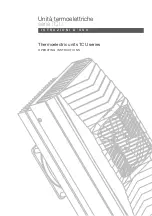
79
GB/MT
should be determined by welding on a
sample workpiece.
CAUTION!
Please note that the
torch must always be placed onto an
insulated surface after welding.
Always switch off the welding device
after completing welding work and
during breaks and pull the plug from
the mains socket.
z
Create a weld seam
Forehand welding
Push the torch forwards. Result:
The penetration depth is lower, broader
weld width, flatter weld bead (visible
surface of the seam) and greater fusion
error tolerance.
Backhand welding
The torch is dragged from the weld
seam (Fig. U). Result: Greater penetra-
tion depth, narrower weld width, higher
weld bead and lower fusion error
tolerance.
Welded joints
There are two-basic types of joints in
welding: Butt welds (outer edge) and
angle welding (inner edge and over-
lapping).
Butt welds
With butt welds of up to 2 mm material
thickness, the weld edges are com-
pletely brought together.
For greater thicknesses, a gap of
0.5 - 4 mm must be selected. The ideal
gap depends on the welded material
(aluminium or steel), the material com-
position as well as the type of welding
selected. This gap should be determined
by welding on a sample workpiece.
Flat butt welds
Welds should be made without
interruption and with a sufficient pene-
tration depth. Therefore, it is extremely
important to be well prepared. The
quality of the weld result is affected by:
the amperage, the gap between weld
edges, the inclination of the torch and
the diameter of the welding wire. The
steeper you hold the torch against the
workpiece, the higher the penetration
depth and vice versa.
U
To forestall or reduce deformations that
can happen during the material harden-
ing process, it is good to fix the work-
piece with a device. Avoid stiffening the
welded structure to prevent cracks in the
weld. These problems can be avoided
if there is a possibility of turning the
workpiece so that the weld can be
carried out in two passes running in
opposite directions.
Welds on the outer edge
The preparation for this is very simple
(Fig. V, W).
Using the device
Summary of Contents for PMSG 200 A1
Page 3: ...1 2 10 36 3 7 A B C D 11 13 12 14 15 17 21 22 23 24 18 19 20 16 9 35 37 32 4 6 8 34 5 33 38...
Page 4: ......
Page 116: ...115 DE AT CH...
Page 117: ...116 DE AT CH...
















































